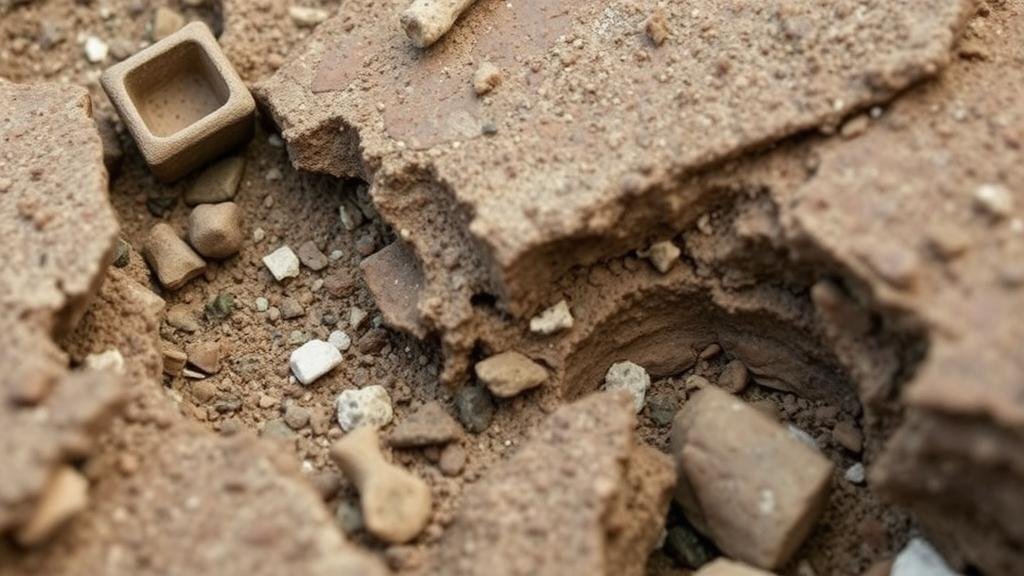Spotting Layers of Ancient Trash Middens for Relics and Tools
Understanding Ancient Trash Middens: Layers of History
Ancient trash middens, often referred to as refuse deposits, are essential archaeological sites that offer a wealth of information about past civilizations. These layers of refuse accumulate over time, providing a tangible link to the daily lives, diets, and economies of ancient peoples. By studying these layers, archaeologists can uncover relics, tools, and other artifacts that help reconstruct historical narratives. This article delves into the processes of spotting, excavating, and interpreting these layers, focusing on their importance in uncovering human history.
The Formation of Middens
A midden is formed as a result of human activity over extended periods. Communities would dispose of their waste in specific areas, either out of convenience or in dedicated refuse sites. Gradually, these deposits would accumulate and become stratified as new layers of garbage were added above old layers. Factors contributing to the formation of middens include:
- Human Behavior: Communities often exhibited specific disposal patterns, often influenced by cultural practices.
- Environmental Context: Natural events such as flooding, drought, or volcanic activity can preserve or alter the stratigraphy.
- Material Composition: Different materials degrade at varying rates. Organic matter may decompose quickly, while ceramics and metals can last for centuries.
For example, the extensive midden at the site of Çatalhöyük in modern-day Turkey shows layers dating back to 7500 BCE, illustrating the communitys evolution over millennia.
Techniques for Spotting Layers
Identifying and analyzing the layers within a midden requires a combination of fieldwork techniques and scientific analysis. Several methodologies are commonly employed:
- Stratigraphic Excavation: Archaeologists dig in a controlled manner, recording the stratigraphy of the middens. This involves careful removal of soil layers to avoid contamination.
- Site Surveys: Surface collection and systematic sampling help identify potential midden sites before excavation.
- Radiocarbon Dating: Carbon dating on organic materials allows researchers to determine the age of different layers accurately.
- Paleoethnobotanical Analysis: Assessing plant remains can provide insights into the diets and agriculture practices of ancient peoples.
For example, the excavation of the Ancient Roman dumps in Pompeii utilized radiocarbon dating and stratigraphic analysis to help piecemeal the daily lives and societal structure of the era.
Relics and Tools: What Middens Reveal
Excavating middens reveals a trove of materials, including:
- Food Remains: Animal bones and plant residues offer insights into dietary habits.
- Artifacts: Items such as pottery, tools, and personal belongings illuminate technological and cultural advancements.
- Organic Waste: Analysis of plant remains and seeds assists in understanding ancient agricultural practices.
A notable example of tool discovery is the remains found at the Gokhem Ecological Archaeological Site in Armenia, where stone tools and remnants of food services showcased the survival strategies and craftsmanship of early agrarians.
Challenges in Middens Analysis
Despite the wealth of information that middens provide, archaeological analysis faces numerous challenges:
- Contamination: More modern materials can intrude upon ancient layers, leading to misinterpretation.
- Site Preservation: Urban development can damage or destroy significant midden sites.
- Interpretative Challenges: Determining the cultural significance of found artifacts may be difficult without contextual evidence.
In response to these challenges, archaeologists must employ strict methodologies and engage in interdisciplinary collaboration. For example, the application of geospatial technologies such as Geographic Information Systems (GIS) aids in mapping and preserving archaeological sites.
Conclusion: The Significance of Middens in Archaeology
Spotting and studying layers of ancient trash middens not only provides raw materials for understanding past cultures but also helps construct a more elaborate picture of human evolution and environmental interaction. By employing rigorous excavation and analysis techniques, archaeologists can unveil valuable details about ancient lives and practices. As urban development increasingly threatens these sites, the need for preservation and thoughtful excavation becomes ever more critical.
As actionable takeaways, communities and scholars must:
- Advocate for the preservation of known midden sites against urbanization.
- Encourage public awareness and education on the importance of archaeological sites.
- Use innovative technologies to enhance excavation methodologies for future generations of researchers.


